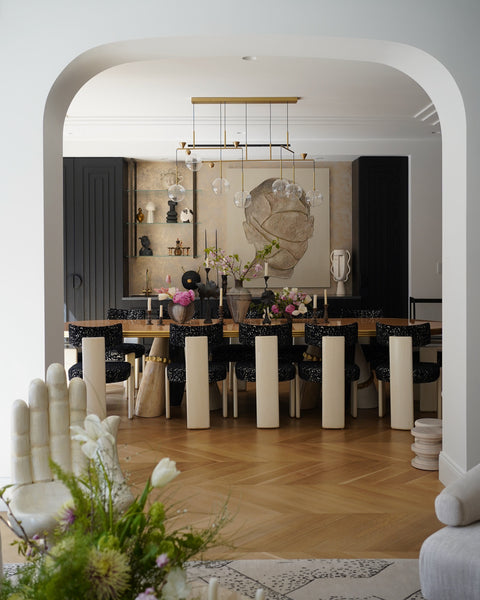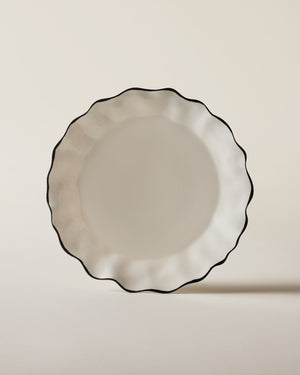MARGO VAN ERKELENS
 |
Whether a portrait, a silhouette of a face, or an abstract landscape, Margo Van Erkelens's paintings look like they have been recovered from a mound of stone and ash. Textured and layered, they bear the mark of their creator's hand. Van Erkelen, however, wants the viewer to inject their own experiences into her canvases. "My drive is only to leave the pure experience of shape and color, allowing imagination and fantasy to go beyond boundaries," she says. "This puts more importance on 'feeling' rather than recognizing."
 |
Based in Ouddorp, a small seaside village just south of the Hague in the Netherlands, Van Erkelens draws inspiration from the beach, which she has lived near since childhood. "The smell of the salty water, the changes of seasons and the accompanying muted color nuances of dunes and water, the textures that are reminiscent of the sand, is what results in my recognizable artworks," she says. Combining layers of paint with sand, soil, fabric samples, failed paintings, pigments, and gypsum, Van Erkelens builds up layers on her canvases so that they can be scraped away. "I love the mistakes in my paintings and embrace them," she says.

|
 |
|
|
“I love the mistakes on my paintings and embrace them. The most beautiful creations evolve using the layers and colors underneath.”
- Margo van Erkelens

|
Texture and color are Margo’s main ingredients for creating a unique piece of art. Instinctively balancing the two, she guides them to an amazing end result. Texture and color can be added in a straightforward way, but how precious is the gift when mistakes occur. Margo often starts with a surface of different materials, absolutely nothing in her path is safe - all kind of leftover materials, previously failed works, cloth samples. You name it, it all gets used. After this first applied layered texture, the technique consists of making a surface which is invented by the artist herself. It is a mixture of different ingredients. Once this surface has dried, Margo often prefers to work with transparent pastel-like colors by using the glazing/patina technique. Various bold layers of paint similar to the impasto technique are lightened up again to apply a patina layer at a later stage, allowing texture to predominate.

|









